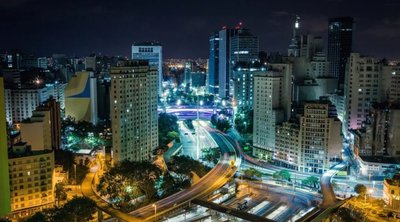By 2050, there will be 9 billion on Earth, according to the United Nations. Among these, 70 percent will be in cities. As this shift from rural to urban areas continues, there is a need for technology to improve safety and security, rebuild aging infrastructure and make better use of space and energy. To solve for these advancements, urban areas are adopting innovative internet of Things (IoT) solutions that make their community’s lives easier.
Currently, there are parts of many cities’ infrastructure that are “smart” or connected, but they’re largely disparate systems. Smart city leaders of the future realize the need for connecting all of these into one source so that data can be analyzed together as a whole, and create a bigger picture of the city’s needs and consumption patterns. The increase in connectivity will enable efficiency in public transportation, IT connectivity, power supply, sanitation, e-governance, building management and energy tracking.
All of these use cases are examples of ways cities can use data and the internet of things to function more effectively and better serve communities.
A Few Examples Of Smart City Leaders
Columbus
Answering to the U.S. Department of Transportation’s call for mid-sized cities to develop a smart transportation system, Columbus created a plan that was built on collaboration and partnership. Their goal was to become the fastest growing Midwest city in job and population growth. To do that, they created a plan using data, applications, and technology to move goods and people more effectively. They’re submission included ways to connect workers with jobs, students with education, expectant mothers with prenatal care, and children to pre-kindergarten programs. They supported these lofty goals by sharing data and leveraging advanced analytics.
St. Albert of Alberta, Canada
St. Albert of Alberta, Canada has a Smart City Master Plan in place. The foundation of their plan? Citywide broadband connectivity.
The city uses underground information networks on main arterial roads to enable traffic signal communication and coordination, allowed for better traffic flow through the city. However, the network faced issues as multiple departments’ large data usage bogged down the broadband connection.
To improve this situation, city leaders in St. Albert developed a Municipal Area Network Plan that addressed citywide connectivity needs. This included fiber optic, high speed broadband that supported civil services like registrations and permitting, a centralized traffic management system, automated utility interfaces, as well as environmental awareness systems in the future.
There is no doubt about the benefits to cities finding ways to evolve and meet the needs of their people, in the most efficient ways possible. In fact, Juniper Research estimates that by 2021, cities will save $19 billion by making their cities smart. That’s why TechNexus believes in the value of connected cities. For the past two years, we’ve worked with the Department of Homeland Security Science and Technology and the Center for Innovative Technology on smart city and first responder technology through our EMERGE accelerator. We’ll be speaking on a panel in March 2018 at SXSW discussing ways private and public organizations can collaborate to move the needle for smart city advancements. If you’d like to learn more about the plan for the program this year, please contact us.
